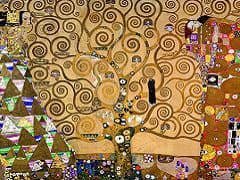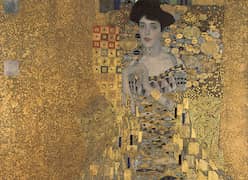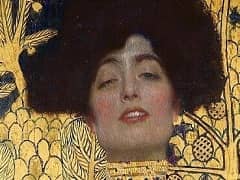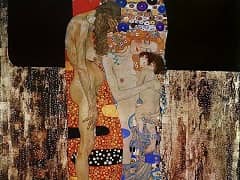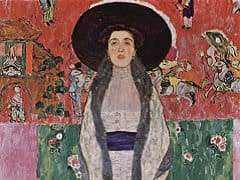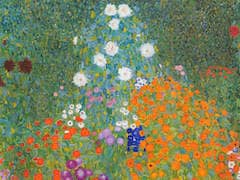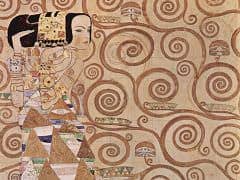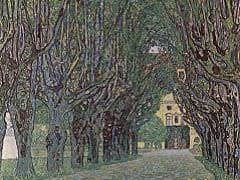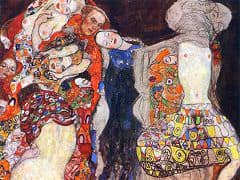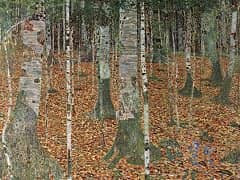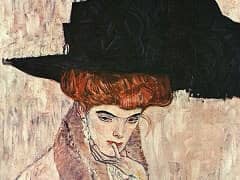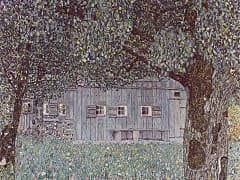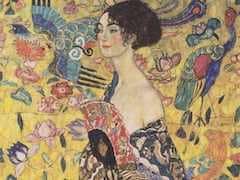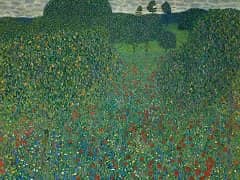Death And Life, 1908 by Gustav Klimt
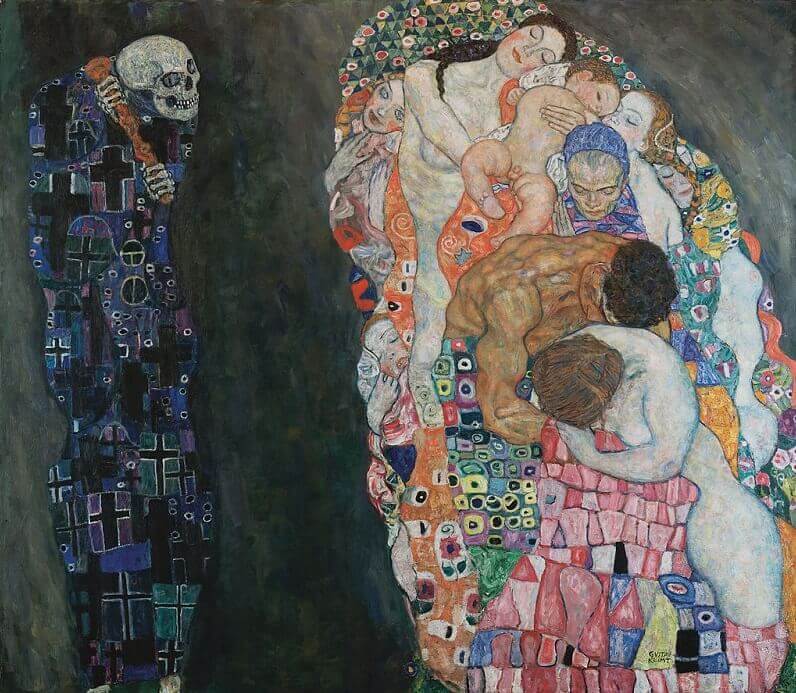
Death and Life has two very clearly separated parts. To the left, we see Death. Death is depicted and the classic grim reaper, a grinning skull, covered in a dark robe covered with symbols. The main symbol we
see covering Death is that of the cross.
To the right we see life. We see a number of young women lying on a flower bed. We have seen similar flower beds before, e.g. in The Kiss We see a newly created life, a baby, lying in their arms.
We see a muscular man holding one of the women and we see an older woman also lying in the middle of the group. The depiction thus covers people, young and old, with a focus on the adults in their best age. There is an over
representation of women in the painting which could refer to women as the source of all life. It could also reflect Klimt's preference for depiction women, preferably somewhat undressed. All the subjects are somewhat covered by
cloth bearing numerous symbols.
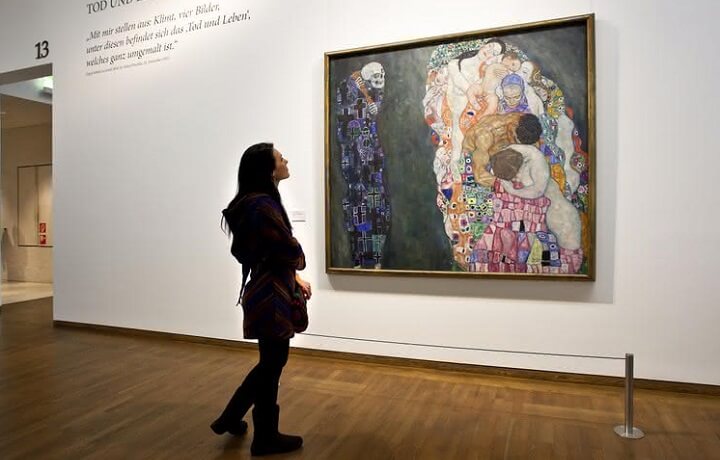
The composition and execution is thus typical Klimt, with symbols taking a center stage.
Death and life is always Klimt's central themes, central also to his contemporaries, among them Edvard Munch and Egon Schiele. Klimt makes of it a modern dance of death, but unlike Schiele, he introduces a note of hope and reconciliation, instead of feeling threatened by the figure of death, his human beings seem to disregard it. Only pure colors are used in this painting, and Gustav Klimt sculpted the figures in his canvase in soft rounded contours.
Among the master pieces of Gustav Klimt, Death and Life won the first price at the world exhibition in Rome in 1911.


